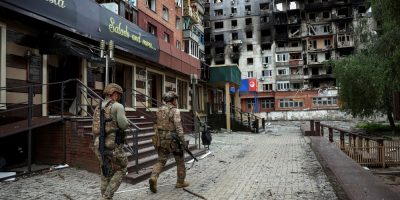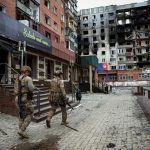(Jamaica Gleaner) At least one economist has indicated that the damage to the country’s infrastructure, spanning housing, water, electricity, telecommunications, and roads could reach an estimated US$16 billion (J$2.5 trillion) or potentially up to at least 75 per cent of gross domestic product (GDP).
Economist Keenan Falconer said yesterday that with GDP expected to fall precipitously in the wake of Melissa’s impact, the debt-to-GDP ratio, governed by legislated fiscal rule since 2014, would rise in the medium term.
He noted that the country was on target to reduce its debt-to-GDP ratio to 60 per cent by March 2026.
The debt-to-GDP ratio is a country’s public debt to its annual economic output expressed as a percentage.
“In these instances, the legislation allows for a suspension of the rules so that the Government can recalibrate its fiscal position for the future,” he said.
In a statement to Parliament on Tuesday, Prime Minister Dr Andrew Holness said a preliminary estimate of Melissa’s impact, based on benchmarks of comparable regional disasters to physical infrastructure, is estimated at between US$6 billion (J$963 billion) and US$7 billion (J$1.1 billion), which is equivalent to 28 per cent to 32 per cent of the GDP for fiscal year 2024-2025.
The prime minister said a preliminary estimate suggests that short-term economic output could decline by eight to 13 per cent.
“It is a major hit to our economy,” Holness declared, saying the country had never experienced a disaster of this magnitude with this economic footprint in terms of the impact.
Noting that the initial estimate is conservative, the prime minister noted that to lose 30 per cent of the country’s GDP is significant. He said in another few weeks, the country would be provided with a more precise estimate of the damage.
The administration is anticipating a temporary slowdown in economic activity, particularly in the most affected parishes, with agricultural output declining sharply in the short term as farmers begin replanting and livestock operations recover.
Holness said while the tourism sector is resilient and working swiftly to recover, it will require targeted support to restore capacity and confidence.
He said small and medium enterprises, especially those in retail, manufacturing services and the creative industries, have sustained significant losses and will require liquidity and recovery support to rebuild inventories, repair their facilities, and restart operations.
Falconer agreed with the preliminary double-digit decline in economic output, noting that the initial impact of the hurricane is not dissimilar to the economic shock the country experienced with the COVID pandemic.
“Given that there is significant infrastructure damage then that is going to constrain commercial and industrial activity in terms of the restoration time it will take for building back, and increasing connectivity will also dampen growth efforts,” Falconer said.
The estimated damage to the housing sector now means that the Government will have to plan and reprioritise future budgets because reconstruction will have to take place over several budget cycles.
“This is going to be a multiyear effort in terms of rebuilding, and so far, those estimates are rather conservative, and damage could potentially go up to at least 75 per cent of GDP or around US$16 billion, according to some estimates,” Falconer said.
Meanwhile, the National Spatial Data Management Branch, supported by international technology partners, analysed more than 428,000 buildings across Jamaica.
Satellite data and drone verification indicate that approximately 116,000 structures sustained severe or catastrophic damage. This is concentrated in Westmoreland, St Elizabeth, and Manchester.
Holness said thousands of households now face the loss of homes, crops, and small enterprises, leaving the country with not only a humanitarian crisis, but a shock to livelihoods, incomes, and local economies.














